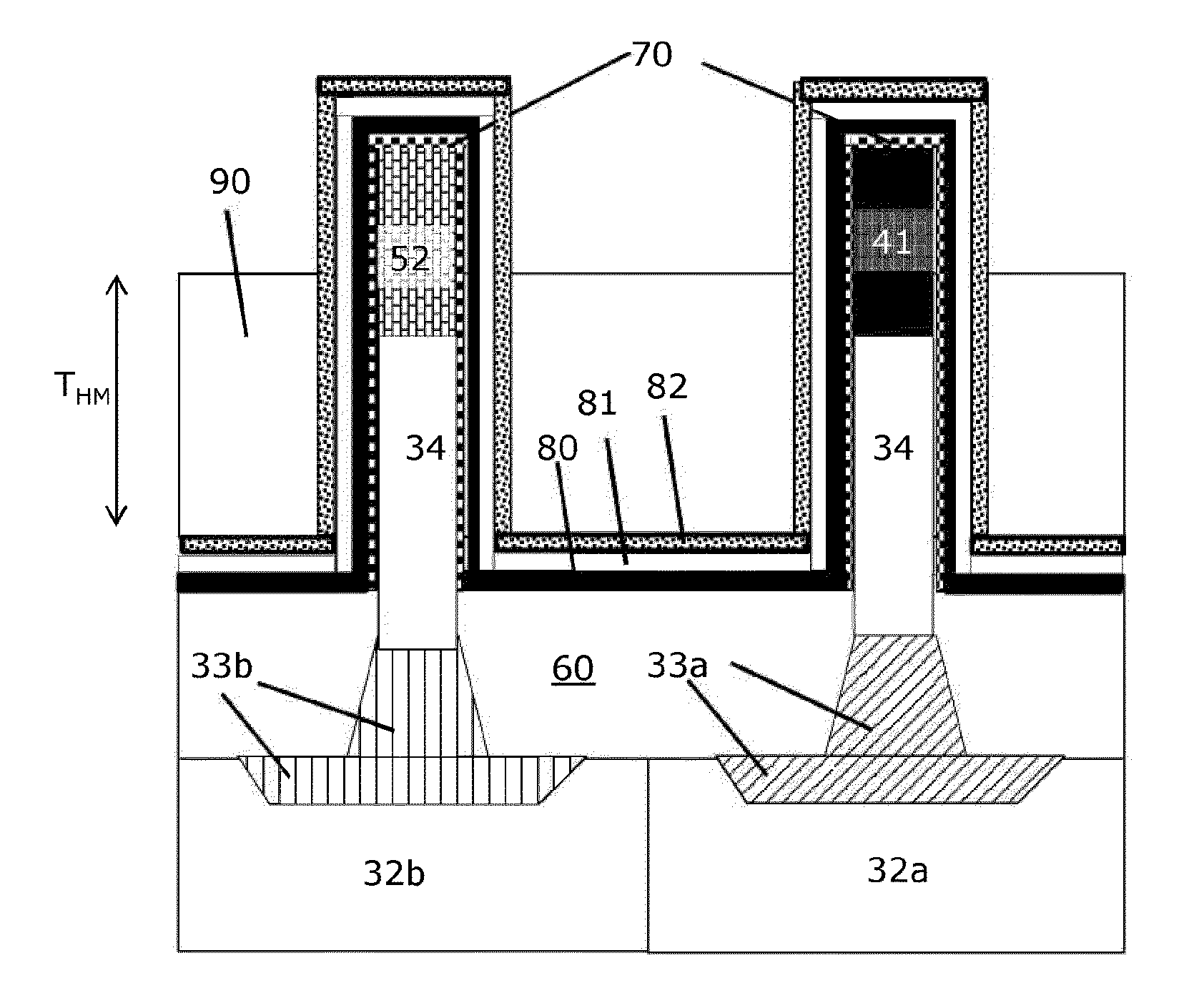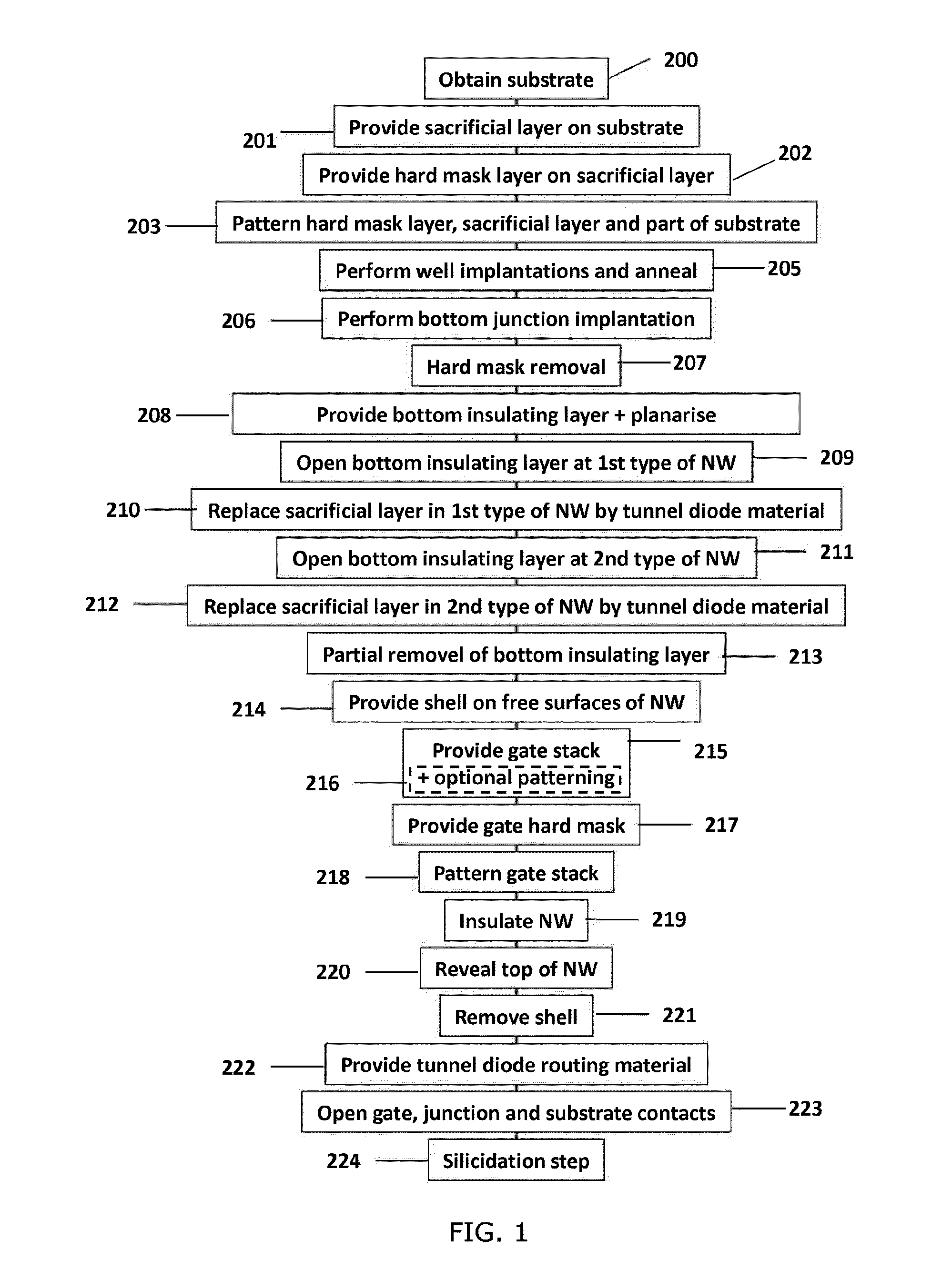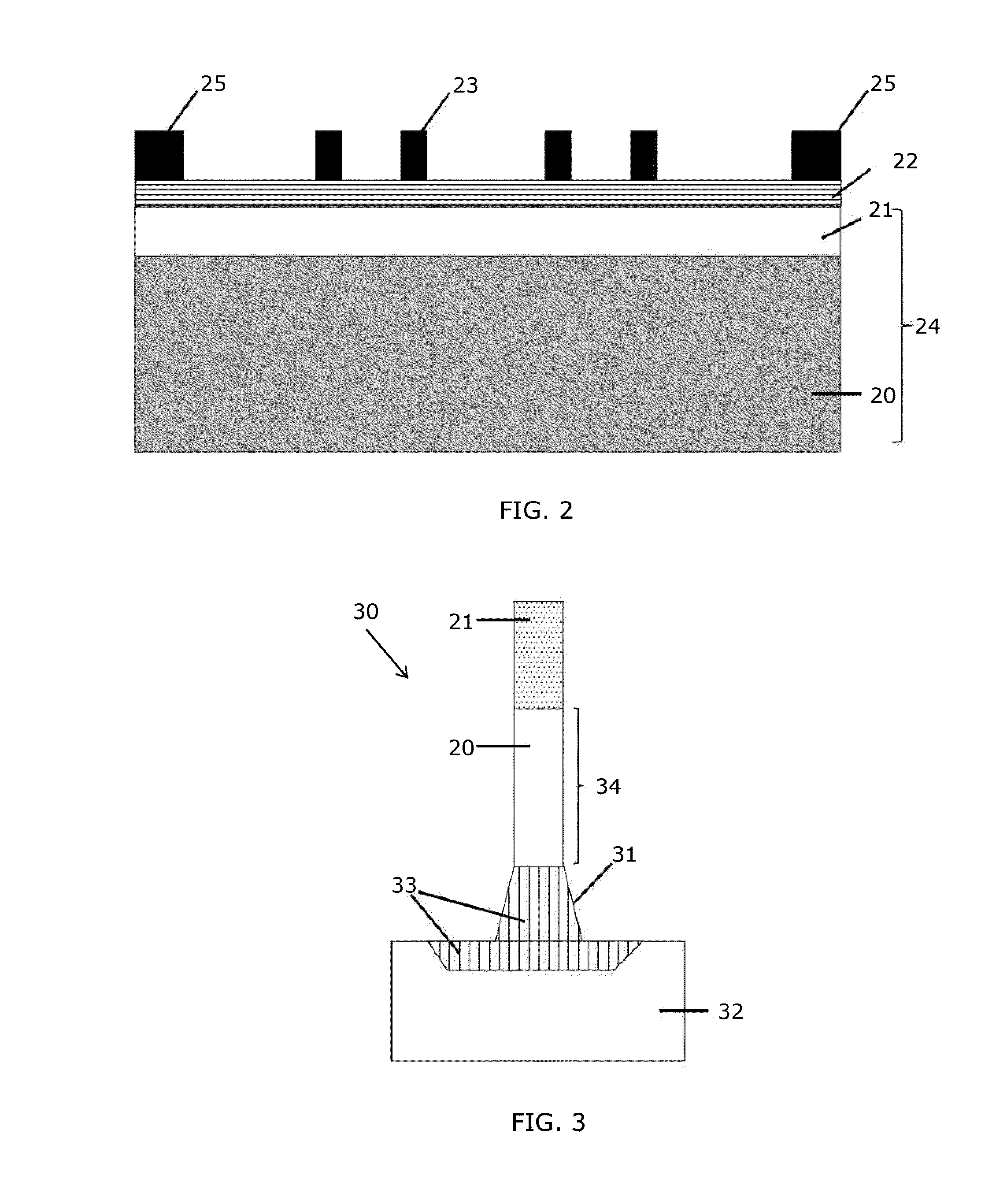Method of manufacturing a complementary nanowire tunnel field effect transistor semiconductor device
a tunnel field effect transistor and nanowire technology, applied in semiconductor devices, diodes, electrical equipment, etc., can solve the problems of difficult to reduce the supply voltage, low on-current of tfets, and increasing power consumption
- Summary
- Abstract
- Description
- Claims
- Application Information
AI Technical Summary
Benefits of technology
Problems solved by technology
Method used
Image
Examples
first embodiment
[0048]A method according to the present disclosure is schematically illustrated in a flowchart shown in FIG. 1 and is described in detail below. It has, however, to be understood that this is only an example of a suitable method for forming a device according to the disclosure, and that the sequence of the process steps as described hereinafter is not limiting the disclosure.
[0049]The method according to the first embodiment discloses the creation of a tunnel field effect transistor (TFET) having at least one nanowire (also referred to as NW-TFET), the nanowire comprising the channel region, source / drain regions, here called bottom and top junctions, and a heterosection. The heterosection is situated in between the channel region and one of the source / drain regions.
[0050]In a first step 200, a substrate 20 is provided. Preferably the substrate 20 is a semiconductor substrate. In particular embodiments, the substrate can for example be a silicon substrate, a substrate of a group IV m...
second embodiment
[0089]A method according to the present disclosure is schematically illustrated in a flowchart shown in FIG. 18 and is described in detail below. It has, however, to be understood that this is only an example of a suitable method for forming a device according to the disclosure, and that the sequence of the process steps as described hereinafter is not limiting the disclosure.
[0090]A number of steps of this method according to the second embodiment of the disclosure are as in the method according to the first embodiment of the disclosure, and are therefore not disclosed here in as much detail as above. Details which are lacking in the description of the second embodiment can be taken from the description of the first embodiment. A major difference between a method according to the first embodiment and a method according to the second embodiment is that in the first embodiment the heterojunction is formed at the beginning of the manufacturing method, while in the second embodiment th...
PUM
| Property | Measurement | Unit |
|---|---|---|
| thickness | aaaaa | aaaaa |
| thickness | aaaaa | aaaaa |
| thickness | aaaaa | aaaaa |
Abstract
Description
Claims
Application Information
 Login to View More
Login to View More - R&D
- Intellectual Property
- Life Sciences
- Materials
- Tech Scout
- Unparalleled Data Quality
- Higher Quality Content
- 60% Fewer Hallucinations
Browse by: Latest US Patents, China's latest patents, Technical Efficacy Thesaurus, Application Domain, Technology Topic, Popular Technical Reports.
© 2025 PatSnap. All rights reserved.Legal|Privacy policy|Modern Slavery Act Transparency Statement|Sitemap|About US| Contact US: help@patsnap.com



